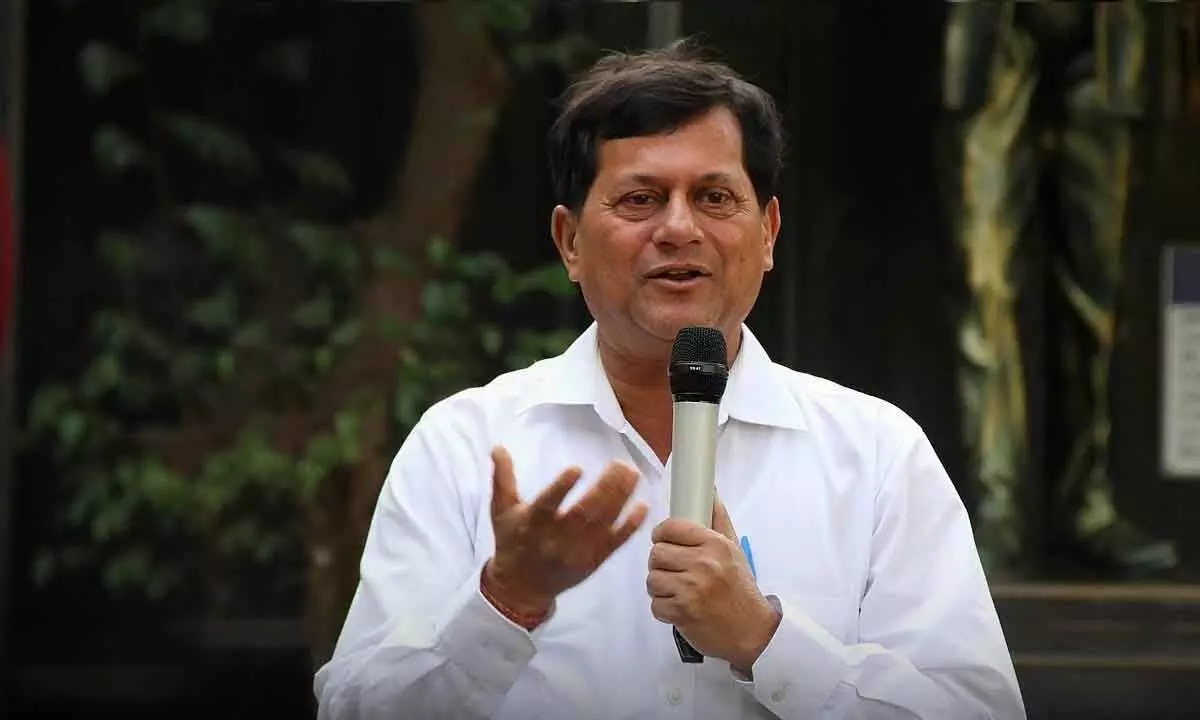From Kalarabanka to Kalinga fame: Art of giving boundless
image for illustrative purpose

“Art of giving is not an act of kindness that any man or woman can arrogate to oneself. Rather it is a social act of concern for others that stems from an abundance of love for all,” says Achyuta Samanta, Art of Giving, KIIT, KISS, Education, Philanthropy, Community Engagement, Social Responsibility, Sustainable Development, the man who was deprived of a meal in a day, today feeds over 100k needy every day.
Achyuta Samanta is the founder of the Kalinga Institute of Industrial Technology (KIIT) and Kalinga Institute of Social Science (KISS) and both transcend boundaries.
Way back in 2013 on 17 May, almost two decades after the inception of the above two institutions in 1992-93, Achyuta Samanta, noted educationist and social activist conceived the idea of the ‘Art of Giving’, an unconditional quest for others’ wellbeing.
‘Art of Giving’ is all about creating an unconditional and sustainable abundance of love, peace, happiness, and contentment for others through gestures of compassion and generosity.
"The key to peace and happiness lies in unlocking the art of giving in each individual," said Samanta who headed both the above institutions where altogether 80,000 students are enrolled in different academic programs.
Kalinga Institute of Social Sciences (KISS) provides free education, boarding, and lodging to more than 40,000 tribal students and 40,000 alumni and others below the poverty line. “The purpose behind the establishment of KISS and initiative about Art of Giving is to make concerted efforts towards inclusive education, women empowerment, tribal upliftment, and sustainable development,” said Samanta.
"We firmly believe that this is the true sense of living in a democracy, where every person has the right to access to resources and opportunities to live and develop with dignity and to become an active and contributing member of our society,” added Samanta.
The primary aim behind Art of Giving is also to make students aware of their responsibilities towards the community and make them responsible citizens.
"We even have students coming from all over the country and globe and are the ones who can afford quality education by giving their fees. On the other hand in KISS we have students coming from the poorest of the poor economic and social strata of society with the least ability to pay fees," Samanta said.
‘Art of Giving’ and our efforts on the ground are the fusion of passion, love, and sincerity of our students toward community engagements. The program currently runs with the active involvement of the students supervised by faculty and the founder as well.
Every year, May 17, is celebrated as International ‘Art of Giving’ (AOG) Day, defined as giving from the heart without expecting anything in return. AOG is a humanitarian movement engaged in spreading an unconditional and sustainable abundance of love, peace, and happiness for others.
Dr Samanta, a noted educationist, and philanthropist is the founder of two world-class institutions. Kalinga Institute of Industrial Technology KIIT provides technical education to 40,000 students across India and overseas and Kalinga Institute of Social Sciences (KISS), is home to 40,000 poor indigenous tribal children who are provided with free education from kindergarten to post-graduation besides free lodging, boarding, and healthcare, vocational and life skill empowerment. KIIT and KISS also provide employment to 20,000 staff.
Under his guidance, the institutions have been able to pick up tribal boys and girls and hone their skills to produce more than 5k sports talents some of which have excelled in their fields nationally and internationally. Even making their presence in the Olympics. For all that, Samanta bears the entire expenses right from training to staying and going abroad.
Samanta who was born to a family that had been caught in the quagmire of needs and hardships knew what hunger is. After taking the plunge into the world of social service, Samanta decided to begin the Art of Giving from home. That was Kalarabanka, a non-descript village where he was born and his childhood had passed through grinding pains of need.
Dr Samanta believes that real development has to take place from the grassroots and that cities can be smart only if the villages are smart. He took up the task of transforming his village into a model village later on this model village was upgraded into a smart village with all the urban amenities including solar energy and wi-fi facilities.

